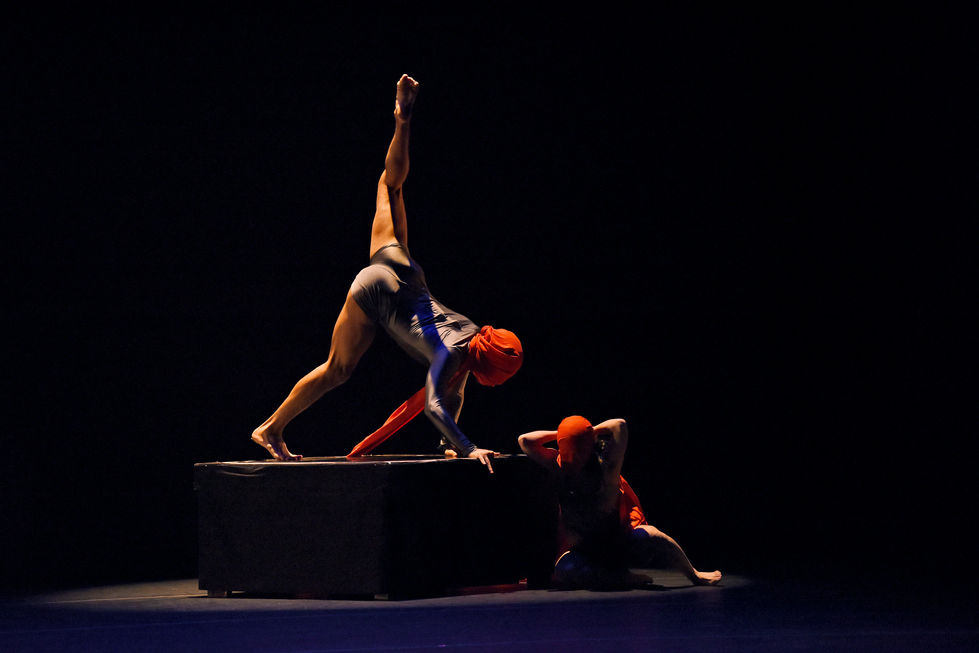top of page

Create Your First Project
Start adding your projects to your portfolio. Click on "Manage Projects" to get started
ENTROPY
.
2024
.
ENTROPY - 2024
“The Dao gives birth to One. One gives birth to Two. Two give birth to Three.
Three gives birth to all things.” –Chapter 42 of the Tao Te Ching
ENTROPY is grounded in the philosophies of Tibetan Buddhism and Daoism, posthumanism, and feminism to frame human trajectories throughout history. This work is choreographed to complicate fixed ideas pertaining to humanity, self, gender, and technology by positioning symbols within narratives that include early stages of human history, human quests for power, and dissolutions of identity across cultures and time. The artist uses symbols to prompt viewers to experience and think about what it means to be human and to question the boundaries of the human form and its existence. Questioning what it means to be human is a post-human anxiety, but also an anxiety known to have been experienced by our ancestors since time immemorial. Perhaps they also asked, why do human beings conduct harmful actions toward nature and themselves?
.
Director: Valkyrie Yao
Lighting Designer: Gemma Hardiman
Costume Designer: Cari Smith
Props Designer: Adam Sanders
Sound Designer: Kylar Gardner
Performers: Kayleigh Berman, Maia Castelli, Sammy Frankel, Megan Keen, Yawen Luo, Amanda Ortega, Yi Peng, Dean Saifullin, Alex Solano, Valkyrie Yao
.
This concert is composed of five chapters that follow a chronological narrative, progressing from the past to the present and future through posthumanism theory and the philosophies of Tibetan Buddhism and Daoism.
.
Prologue
I. 一1One二2Two三3Three
一Yi1One:
In “Taiji Tushuo,” Zhou Dunyi writes: “The Wu Ji (Limitless and yet the Tai Ji (Supreme Ultimate). The Tai Ji moves and generates Yang; when movement reaches its limit, it becomes still, and stillness generates Yin. When stillness reaches its limit, movement arises again. One movement and one stillness mutually root each other; Yin and Yang are thus differentiated, and the Two Forces are established.”
二Er2Two:
Chapter 42 of the Tao Te Ching: “The Dao gives birth to One. One gives birth to Two. Two give birth to Three. Three gives birth to all things.”
三San3Three:
Everything
II. N.U.O. collaborated with Yi Peng
What is it that we fear? Perhaps it is our fragility, our limitations, and the looming potential for self-destruction. In rituals, the act of donning a mask becomes a portal—merging humans with nature, divinity, and the unknown, as though reaching beyond the self to grasp something far more powerful and enigmatic.
Nuo culture (傩文化) is an ancient Chinese folk tradition that combines elements of ritual, performance, and spirituality. It originated thousands of years ago and is most closely associated with exorcism, shamanistic practices, and ancestor worship. In Nuo rituals, masks play a central role, symbolizing deities, spirits, and
ancestors. These ceremonies were traditionally performed to drive away evil spirits, protect communities from misfortune, and ensure prosperity. Today, Nuo culture is recognized for its deep connection to Chinese history and spirituality, offering insight into early beliefs about life, death, and the unseen forces that
influence human existence.
III. HUNGER
What did you have for breakfast, lunch, and dinner? Where does the food you eat come from? Who made it, how was it made, and what are its nutritional components? Do you enjoy it alone or share it with others? Why do you eat? Is it because you’re hungry? Is it because you need nutrition to survive? Or is it because you’re craving it?
IV. Off to On
"no-self" (anatta or anātman), five aggregates (skandhas) — form (rūpa), sensation (vedanā), perception (saṃjñā), mental formations (saṃskāra), and consciousness (vijñāna), dependent origination (pratītyasamutpāda), suffering (dukkha), enlightenment (bodhi) and liberation (nirvana) – Tibetan Buddhism Doctrine
“Who am I?”
“Where do I come from?”
“Where am I going?”
V. Fourth Wound
First Wound: The Fall from Innocence
Humanity’s lost purity and disillusionment.
Second Wound: The Fragmentation of Self
The fragmentation of identity and the understanding that the self is not a singular, cohesive entity.
Third Wound: Cosmological Displacement
Humanity’s existential crisis in the face of an indifferent universe where traditional narratives have lost their power
Fourth Wound: Digital and Synthetic Relationality
What it means to be alive and how agency is distributed among humans and machines.
Haraway, D. (1991). Simians, Cyborgs, and Women: The Reinvention of Nature.
Haraway, D. (2016). Staying with the Trouble: Making Kin in the Chthulucene. Durham, NC: Duke University Press.
Haraway, D. (2004). The Haraway Reader. New York: Routledge.
Epilogue
Concert




































































































bottom of page



